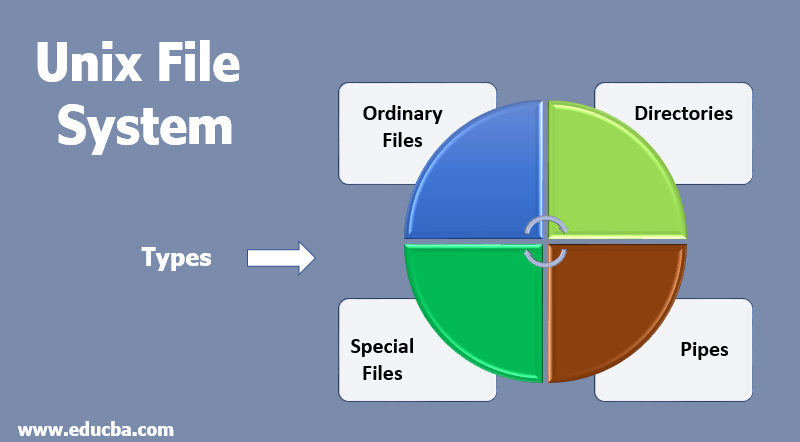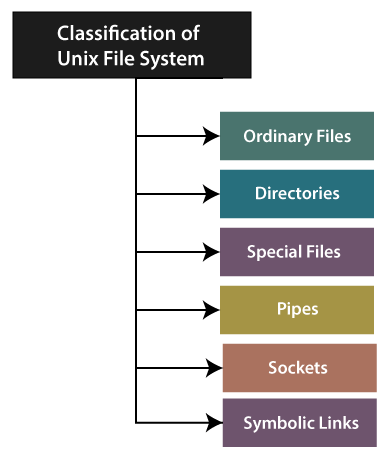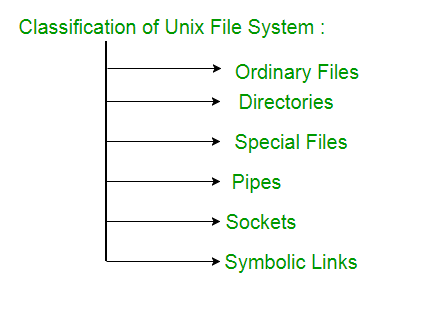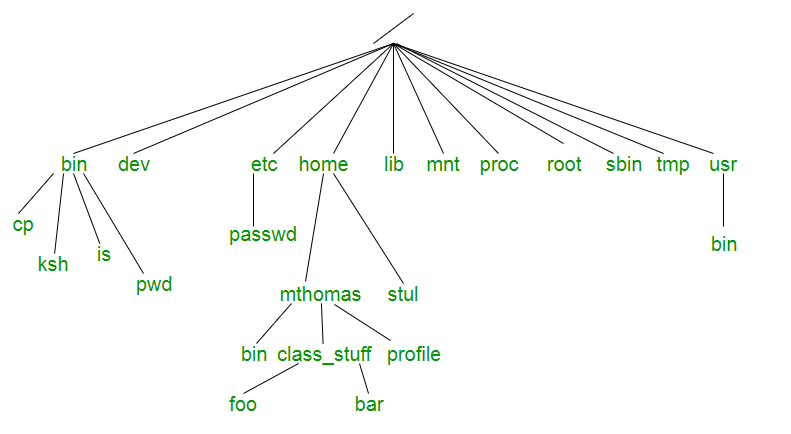Explain Different Types of File in Unix
These files contain settings for user environment characteristics such as. Sort the lines in stdin and print the result to stdout.

Unix File System Comprehensive Guide On Unix File System
Values that you can customize.

. An absolute path is defined as specifying the location of a file or directory from the root directory. Represents an ordinary file. Ordinary files directories and special files also termed device files.
Always located withinunder a directory file Do not contain other files. In this chapter we will discuss in detail about pipes and filters in Unix. The following sections describe OS shells mostly available on UNIXLinux Operating system.
While the latter two may not intuitively seem like files they are considered special files. Inaddition there are listed file directory symbolic link filenamed pipe file domain socket file device file and doorscomputing. You can connect two commands together so that the output from one program becomes the input of the next program.
The Berkeley Software Distribution BSD and System V each added a file type to be used for interprocess communication. Search paths for finding commands. Values for variables that other programs use.
Redirection allows commands file handles to be duplicated opened closed made to refer to different files and can change the files the command reads from and writes to. What is. Linux supports seven different types of files.
The seven standard Unix file types are regular directory symbolic link FIFO special block special character special and socket as defined by POSIX. What are the different Shells. The flags in the first column specify the file mode and the different sets of permissions.
Every file and directory on your UnixLinux system is assigned 3 types of owner given below. The file named letter in your shell account is an example of a regular file. This is the type of file that you usually work with.
Redirection may also be used to modify file handles in the current shell execution environment. From the beginners perspective the Unix file system is essentially composed of. Find lines in stdin that match a pattern and print them to stdout.
Type f files contain a program or text and are created with an editor such as vi or a compiler such as cc. Some are set by the system others by you yet others by the shell or any program that loads another program. Explain line addressing and context addressing in Unix and shell programming 1 Answer What are Loops and explain three different methods of loops in UNIX 1 AnswerExplain how you will open a read-only file in UnixShell1 AnswerDifference between Linux and Unix2 AnswerWhat is AWK.
To make a pipe put a vertical bar on the command line between. The UNIX operating system consists of Regular Computer files. Read lines from stdin and more files and concatenate them to stdout.
Represents a character device file. A file type helps us in identifying the type of content that is saved in the file. Default permissions on new files.
Read from stdin and print unique that are different from the adjacent line to stdout. In other wordswe can say that an absolute path is a complete path from start of actual file system from directory. The most common available file types are.
Unix Linux - Pipes and Filters. A user is the owner of the file. File Types The UNIX filesystem contains several different types of files.
These file types are the Regular file Directory file Link file Character special file Block special file Socket file and Named pipe file. Special Files Used to represent a real physical device such as a printer tape drive or terminal used for. Different Types of Unix files Regular files Directories Special or Device files.
By default the person who created a file becomes its owner. Hence a user is also sometimes called an owner. Explain any three built in function of AWK1 AnswerHow to use.
Let us have a look at a short summary of all the seven different types of Linux file types and ls command identifiers. Ordinary Files Used to store your information such as some text you have written or an image you have drawn. The value assigned could be a number text filename device or any other type of data.
1 The first character indicates the type of file. Which is included in the Unix file system. The original Unix file system supported three types of files.
The following table provides a brief description of these file types. BSD added sockets while System V added FIFO files. In UNIX files are divided into categories called types.
Represents a block device file 2 The next three characters indicate user permissions. A variable is a character string to which we assign a value. What is redirection explain its modes.
Pipes UNIX allows you to link commands together. Unix Filter Commands. 1 The Filename 2 A unique identification number for the file or directory called the inode number Branching points in the.
Two or more commands connected in this way form a pipe. Relative path is defined as the path related to the present working directlypwd. An important Unix concept is the environment which is defined by environment variables.
All files in the Unix file system can be loosely categorized into 3 types specifically. The first type of file listed above.

Types Of Files In Unix Javatpoint


No comments for "Explain Different Types of File in Unix"
Post a Comment